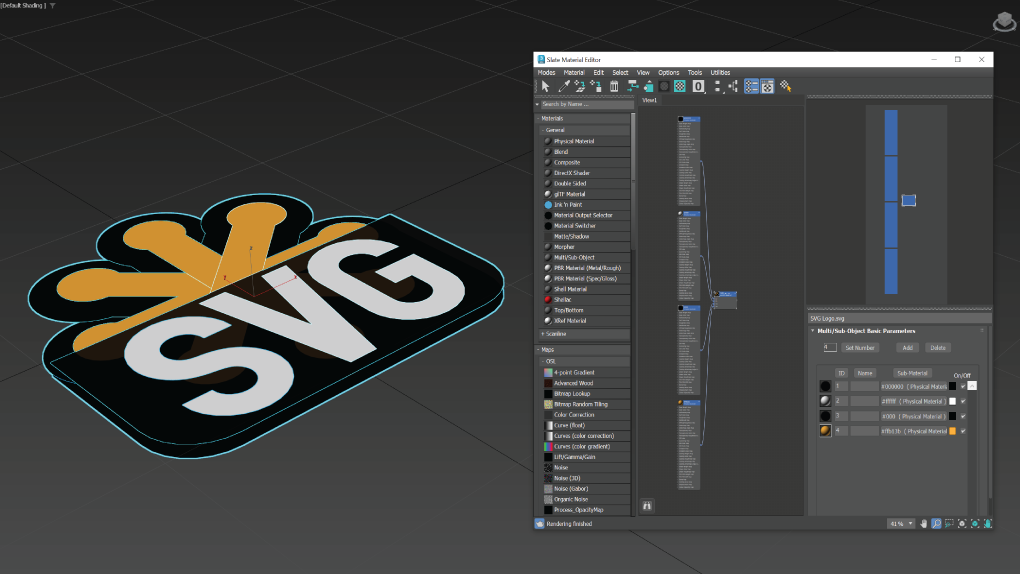You can now import and export data in the Scalable Vector Graphics (SVG) file format.

W3C SVG Logo imported into 3ds Max, licensed under the Creative Commons Attribution-ShareAlike 4.0 International (CC BY-SA 4.0) license.
You can now use the Scalable Vector Graphics (SVG) file format for import or export of scene data in 3ds Max. This is an easier, modernized method for using 3ds Max to work with vector data sourced from 3rd party applications.
File Import
- Import SVG vector data as 3ds Max splines.
- Color data of the SVG object is loaded as the object color of the Spline in 3ds Max as well as an option to import colors as a 3ds Max Material (gradient data is not supported, when it is encountered the start gradient color is used).
- Strokes are supported as Renderable Spline data in 3ds Max.
- Vector data can be imported as individual Splines or as a Group.
- When multiple vector shapes are imported as splines, the splines are sorted automatically in Z depth based on the layering information contained in the SVG.
- Option to import data as a Spline with an Extrude modifier applied.
- Option to import data as an Editable Poly.
- Automatic cleanup options if importing as a Collapsed Editable Poly (automatic weld if close spline vertex knots, cleanup of self intersecting curves).
File Export
- 3ds Max spline vector data can be exported to a SVG file. The color of the object is used to define the color of the filled-in SVG object.
- Option to use X position to handle layer ordering, and export of pivot data.
- Renderable splines are exported as strokes.
- Unit size is respected.
Note: In certain and limited edge cases, SVG data is unsupported. This includes certain instances of the following: uncollapsed text (SVG import does not show font information), animations, vertex mitre types, embedded bitmaps, and more. Currently, adding additional support beyond the latest support is unforseen.
